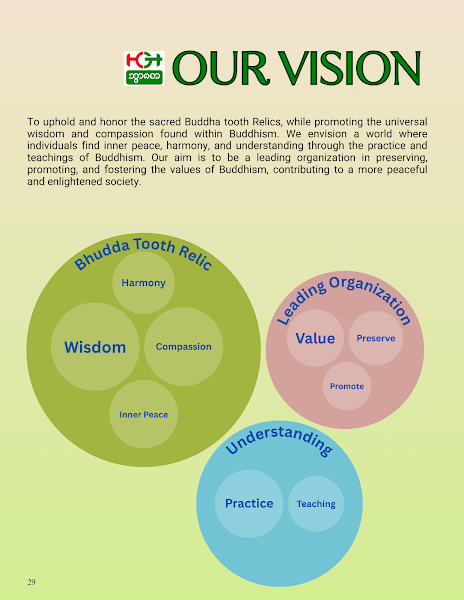Anekajātisaṃsāraṃ sandhāvissaṃ anibbisaṃ gahakāraṃ gavesanto dukkhā jāti punappunaṃ Gahakāraka diṭṭho'si puna gehaṃ na kāhasi sabbā te phāsukā bhaggā gahakūṭaṃ visaṅkhataṃ visaṅkhāragataṃ cittaṃ taṇhānaṃ khayamajjhagā (The Dhammapada, verses 153-154)
ဝန္ဒာမိ
Total Pageviews
Search This Blog
Monday, April 01, 2024
The Sacred Legacy of Lord Buddha's Plasma Stupa in Ancient India
Saturday, March 30, 2024
Acknowledgment and Respect
Sunday, March 24, 2024
Bhikkhuni Sangha and the Construction of Religious Monuments (Inscription of Bhikkhuni Dhammarakkhita)
Throughout the long history of Buddhism, the Bhikkhuni Sangha (community of ordained Buddhist nuns) appears to have had only a minor role. They were not invited to participate in the Buddhist Councils (Saṅgāyana), and even during Emperor Ashoka's time, when he sent out nine missionary delegations, no Bhikkhuni was included. This may be due to the difficulties and dangers that women faced when traveling long distances, making it impractical for them to join such missions. As a result, the Bhikkhuni Sangha did not spread widely, and it appears that their role gradually diminished after the Buddha's parinibbāna (passing away). Some scholars have even claimed that the Bhikkhuni Sangha may have disappeared around 600 BE (43 BCE).
However, archaeological evidence from inscriptions at important Buddhist sites suggests otherwise. Even during the Pāla dynasty period (circa 1300–1600 BE / 757–1057 CE), the names of Bhikkhunis can still be found, implying that the Bhikkhuni Sangha continued to exist, albeit with limited influence. It is likely that Bhikkhunis remained active until the final decline of Buddhism in India, around 1700 BE (1157 CE).
The Bharhut Inscription
One of the most significant pieces of evidence is found at Bharhut Stupa, built during the Shunga Dynasty, around 300 BE (circa 227 BCE). Inscriptions from this site, written in Brāhmī script and Prakrit language, record the names of Bhikkhunis from various cities who donated to the construction of different parts of the stupa. In total, at least ten Bhikkhunis are named as sponsors of various structures, including pillars, gateways (toranas), stupa walls, and other surrounding elements.
One Bhikkhuni in particular is recorded as the donor of a railing pillar surrounding the stupa. The inscription, written in three lines, reads:
-
Kosapekaye (Kosambīkaye) Bhikkhunīye
-
Venuginiyāye Dhamarakhitā
-
Yā (Dhammarakkhitāya) dānaṁ
Translation:
"The donation of the Bhikkhuni named Dhammarakkhita, from the Venuginīya clan, a native of Kosambī."
This indicates that the donor of the pillar was a Bhikkhuni named Dhammarakkhita (Pāli) or Dharmarakṣitā (Sanskrit). She belonged to the Venuginīya family and hailed from the city of Kosambī.
This evidence confirms that Bhikkhunis not only existed during that period but also took part in significant religious acts, such as sponsoring major parts of a stupa's construction—an indication of their religious commitment, status, and merit.
Language Evolution in Inscriptions
During the Maurya, Shunga, and Kushan periods (approx. 200–750 BE / 343 BCE–207 CE), donor inscriptions typically began with the word “dānaṁ” meaning “gift” or “offering.” However, in the later Gupta and Pāla periods (approx. 1000–1600 BE / 543–1057 CE), where Sanskrit became more dominant, inscriptions began using the term “deyyadharma”, which also means religious offering or pious gift.
Ancient inscriptions like the one at Bharhut provide not only architectural and artistic insights but also highlight the often-overlooked role of Bhikkhuni Sangha in the support and development of the Buddhist religion. Though historical records may be sparse, these stone inscriptions are silent yet powerful testimonies to the contributions and devotion of Buddhist nuns.
The story of Bhikkhuni Dhammarakkhita stands as concrete evidence of female monastics’ presence and religious involvement, demonstrating that women played an essential part in the early propagation and establishment of Buddhism—even if their voices were not always recorded in mainstream historical texts.
“Though quiet in the pages of history, the faith of the Bhikkhuni resounds in the stone inscriptions.”





























